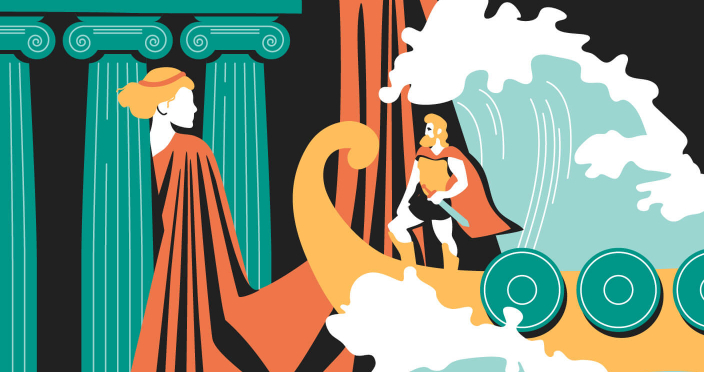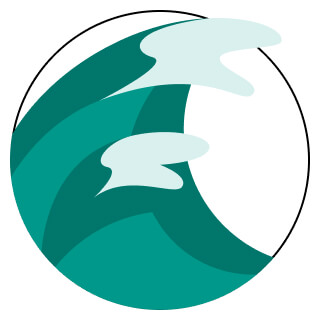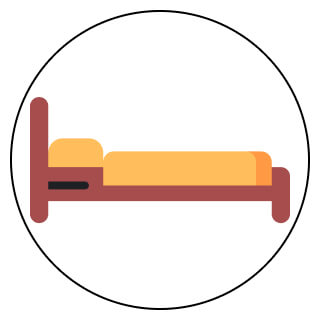Literary devices in The Odyssey help create multiple layers for the themes of perseverance, identity, and the complexities of human relationships. With its various symbols, The Odyssey has fascinated readers for centuries: the sea, which represents life’s unpredictability, Odysseus’ bow, a testament to his strength and rightful authority, etc. Key literary devices in The Odyssey include vivid similes, recurring epithets, and rich imagery, which enhance the narrative’s deepness and emotional impact.
As noted in Martin Litchfield West’s The Making of the Odyssey (2014), Homer’s use of literary devices and symbols not only enriches the text but also connects it to the broader tradition of Greek storytelling, with insights into ancient cultural values and beliefs. In this post, we will examine symbolism in The Odyssey and focus on how objects and settings resonate with the epic’s themes. Additionally, we’ll analyze Odysseus’ symbols and explore how they reflect his heroism and growth through his trials.
🐙 Sea Symbolism
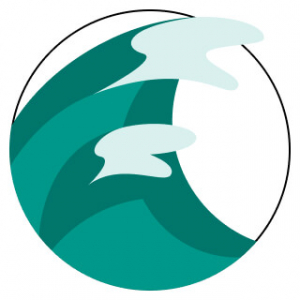
The sea is one of the most prominent symbols in The Odyssey. For ten long years, Odysseus traverses the open waters in his desperate wish to return home from the Trojan War. The hero’s journey is largely hindered by this force of nature. Simply put, it is the representation of the constant danger Odysseus finds himself in. The raging waters and never-ending storms prevent him from returning home, destroying Odysseus’ ship over and over again. The sea is never on his side, and there is a good reason for that.
From the very beginning of the poem, we learn that the Greek gods pity Odysseus. They hold him in high regard and want to help him on his journey. The only one to hold a grudge against the fabled hero is Poseidon, god of the sea. He becomes Odysseus’ greatest obstacle in his sails – and the sea itself becomes his enemy.
On his adventures sailing from Troy, Odysseus tricked and blinded Poseidon’s son, the Cyclops Polyphemus. From that point on, his journey is cursed. Even Zeus is not able to prevent that. The sea becomes a symbol of Odysseus’ helplessness against the gods.
His travels are riddled with storms and upset waters. The horrible sailing conditions force the hero to constantly make stops at other islands, further delaying his return. Even help from other gods does not work:
- Aeolus bags up all the winds but one to speed up Odysseus’ journey, but his crew mistakenly opens them up. The released storm blows back their ships to the very beginning.
- Hermes warns Odysseus not to touch the sun god Helios’ cattle, but his men do not listen. The storm that follows in retaliation destroys all the ships and kills everyone except for the king of Ithaca. Odysseus is forced to travel by raft, and it too suffers through storms and wrecks.
There are many instances where he nearly drowns but survives with Athena’s help. The sea, again and again, keeps representing Odysseus’ suffering and struggle.
The Odyssey’s setting takes us across many islands of the Aegean and Black seas, across Ancient Greece, and even to the Underworld. However, the open waters are where Odysseus encounters most of his dangerous enemies.
The Odyssey is full of monsters that try to prevent the hero from coming home. The sea is their symbol – Cyclops, Scylla, and Charybdis, and the sirens are all connected to water. Using his wit and strength, Odysseus manages to overcome his obstacles, but he suffers throughout the voyage.The sea is endlessly wrathful and perilous. The Ancient Greeks were excellent and capable sailors, but even they would have been helpless against a raging storm. The Odyssey serves as a reminder of the dangers of the natural world. However, Odysseus does come home. In the end, his journey brings him back to Ithaca despite all the difficulties. In this regard, the sea is also symbolic of life itself. It tells us that no matter the problems or the hardships, we have to keep on persevering. Only by surviving and fighting through can we truly achieve our goals.
🧶 Penelope’s Shroud Symbolism
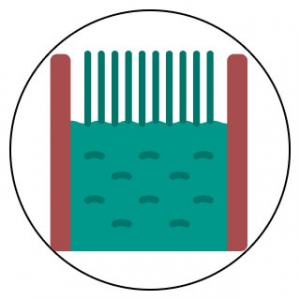
The Odyssey praises intelligence and wit. Time and time again, we are reminded of Odysseus’ cunning. It keeps him safe in his travels and wins him the favor of the gods. It is natural, then, that his wife does not fall short of her husband.
When we first encounter her, Penelope is seen weaving a tapestry. Back in Ancient Greece, this would have been a common sight. Women often spent their days at the weaving loom, creating garments for the household. In this regard, Penelope’s association with clothes is symbolic of her femininity. She is the ideal wife, the ideal hostess, and the ideal woman. However, Penelope’s shroud also has a much deeper meaning.
The queen of Ithaca promises her restless suitors that she will eventually choose one of them to marry. Yet, she cannot do so until she finishes the burial shroud for her father-in-law Laertes. We find out that Penelope’s weaving has been going on for three years, fruitless. The suitors are at a loss why the shroud is not getting any longer. Eventually, her secret becomes known.
Every day Penelope would work on the shroud. Every night she would sit by the loom, undoing her work. For three years, she has been tricking the suitors, giving her husband time to return home. The shroud is one of the essential symbols in The Odyssey because it represents Penelope’s cunning.Odysseus’ wife is not capable of making the suitors leave by force. Being a woman in Homer’s time, she also cannot decline their advances. With Odysseus believed to be dead, she was running out of excuses for not marrying one of them. This is why Penelope is forced to come up with a different way of stalling for time. The shroud is the symbol of her endless devotion to her husband, as well as her intellect and resourcefulness.
🌱 Symbolism of Odysseus’ Bed
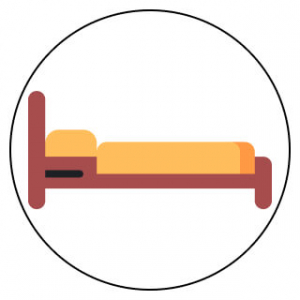
The king and queen of Ithaca have been separated for decades, but their love for each other never fades. Their loyalty is proven time and time again. Odysseus never stops wishing to come home to his wife, despite all the hardships and temptations. Penelope never stops waiting for her husband’s return, despite everyone believing he died in the Trojan War. Their bond is unbreakable and is represented by an interesting symbol in The Odyssey.
When Odysseus finally returns to Ithaca, he disguises himself as a beggar to trick the suitors and take them out. He reveals himself to his wife only after taking out their enemies. However, Penelope remains skeptical. She waited for too long to be misled now – she needs to make sure that this is her husband.
How does Penelope test Odysseus?
She tells him that in his absence, the servants have rearranged the bedroom and moved his bed. To that statement, her husband reacts with outrage. He tells Penelope that that is impossible – only gods could move Odysseus’ bed. He carved it into the wood of an olive tree, around which the entire house was built. Without cutting it down, the bed is immovable. And because of his claim, Penelope knows for a fact that this man is her husband. The bed is symbolic of the couple’s shared intelligence and cunning. It is their little intimate secret that only the two of them know. It also symbolizes their bond, loyalty, and faithfulness. Just like the trunk of the olive tree, their love for each other is unbreakable and cannot be stirred.
🏹 Symbolism of Odysseus’ Bow

The Odyssey is full of symbols that have profound meaning and underlying ideas. Many of them are metaphorical and talk about great concepts. However, there is a particular item that represents the king of Ithaca in his entirety. Odysseus’ symbol is his bow.
The fabled weapon serves a critical role in the story. It is a precious gift, and Odysseus did not take it to war. Instead, he left it in his palace to represent the Ancient Greek tradition of xenia, hospitality. The bow is a symbol of the importance of friendship.
After the suitors expose her weaving deception, Penelope is forced to finish the burial shroud. She needs to find yet another clever solution. With Athena’s guidance, she proposes a contest. Penelope claims that she would marry whoever managed to string up Odysseus’ bow and shoot an arrow through twelve ax heads. Yet, she is aware that only the king of Ithaca himself is capable of such a feat. Once again, the bow becomes a symbol of intelligence and cunning.
Besides that, the bow is also symbolic of Odysseus’ raw strength. He may not be a demigod, but he is still an epic hero. This means that physically he is miles ahead of any human. None of the suitors manage to come even close to stringing up the bow. This indicates their weakness. It also shows that they are not suited to lead Ithaca or marry Penelope. The only one who does it on his first try is Odysseus himself. With ease and grace, he accomplishes the challenge set by his wife. Odysseus smites the suitors with his fabled bow and slaughters them all. His weapon becomes a symbol of his revenge – and his return to the throne of Ithaca.
📒 Literary Devices in The Odyssey
Homer is an innovator on many literary fronts. Even the literary devices he utilizes are different from the ones we are used to. In the following sections, we’re going to dive deep into the language and techniques of The Odyssey.
Similes in The Odyssey
Epic similes in The Odyssey are widely considered as Homer’s invention. There is a pattern to the creation of one such simile. At first, the author outlines an image or scene that will be the focus point. Then we find the comparison, described in great detail. Finally, we are once more reminded of the initial subject. The similes often begin with “as,” “just as,” or “like” and move into comparison. These words allow us to distinguish them from metaphors. The difference between a regular simile and similes in The Odyssey is in the length and level of detail.
💬 Quotes with Similes
That was the song the famous harper sang
The Odyssey, Narrator, Book VIII
but great Odysseus melted into tears,
running down from his eyes to wet his cheeks …
as a woman weeps, her arms flung round her darling husband,
a man who fell in battle, fighting for town and townsmen,
trying to beat the day of doom from home and children.
Seeing the man go down, dying, gasping for breath,
she clings for dear life, screams and shrills—
but the victors, just behind her,
digging spear-butts into her back and shoulders,
drag her off in bondage, yoked to hard labor, pain,
and the most heartbreaking torment wastes her cheeks.
So from Odysseus’ eyes ran tears of heartbreak now.
The passage from Book VIII begins with the description of Odysseus crying at the bard’s song. Then Homer moves into a lengthy comparison of his tears to those of a woman who just lost her husband. The imagery is detailed and filled with emotion. Finally, we are once again reminded that we are talking about Odysseus’ pain.
We sailed to Pylos, to Nestor, the great king,
The Odyssey, Telemachus, Book XVII
and he received me there in his lofty palace,
treated me well and warmly, yes, as a father treats
a long-lost son just home from voyaging, years abroad:
such care he showered on me, he and his noble sons.
In Book XVII, Telemachus tells his mother, Penelope, about how well King Nestor treated him. He compares it to a father taking care of his long-lost son. Once again, the passage ends with Telemachus restating what he was initially talking about.
Metaphors in The Odyssey
Similar to Homeric similes in The Odyssey, metaphors also play an essential role in establishing the tone. They are a literary device that describes an image or action using words that are not literal. Homer usually narrows his use of metaphors down to a single word. Often, their use is repeated throughout the poem.
Unlike similes, metaphors in The Odyssey are not as striking. They are not meant to cause a great wave of emotion. Instead, the author uses them as a casual poetic device to further embellish the language.
💬 Quotes with Metaphors
Nine years we wove a web of disaster for those Trojans
The Odyssey, Narrator, Book III
Nestor tells this to Telemachus in Book III. In this metaphor, the king is talking about the nine years of the Trojan War and the Greek’s eventual victory. He refers to their planning and scheming as “weaving a web.”
and there slowly came a grand array of women,
The Odyssey, Odysseus, Book XI
all sent before me now by august Persephone,
and all were wives and daughters once of princes.
They swarmed in a flock around the dark blood.
In this passage of Book XI, Odysseus finds himself in the Underworld. He slaughters a sacrifice to speak with the ghosts, and they come to drink the blood. The women are describing as “swarming in a flock” to compare them to starving birds. Homer uses this metaphor to paint a horrible image of desperation, further terrifying his audience.
so with his virtuoso ease Odysseus strung his mighty bow.
The Odyssey, Narrator, Book XXI
Quickly his right hand plucked the string to test its pitch
and under his touch it sang out clear and sharp as a swallow’s cry.
In Book XXI, Odysseus finally reveals himself by stringing his famous bow. Homer compares the ease with which he manages to do so to a musician tuning his instrument. This illustrates the hero’s grace and pure strength.
Irony in The Odyssey
Dramatic irony in The Odyssey is a device used to create tension and build suspense for the audience. During the poem, we have insight into things that the characters are often unaware of. They often expect one result when the reality turns out to be completely contrary. We know the full scope of the story, and this creates a sense of irony for the audience.
There are a few great examples of dramatic irony:
- When Telemachus finally gets to meet his father after twenty years of absence, he doesn’t know about it. Odysseus is disguised as a beggar. His son, who spent a big part of the story searching for him, is unaware that he finally reached his goal.
- Likewise, when Penelope sees Odysseus for the first time in twenty years, she cannot recognize him. The audience knows that this is her husband standing before her – but she does not.
To a degree, the very premise of The Odyssey is somewhat ironic. The typical story about an extraordinary journey involves the hero leaving home to embark on a great adventure. Homer, in defiance of this trope, tells us an epic about coming back.
Dactylic Hexameter in The Odyssey
One of the most significant literary devices in The Odyssey is the meter in which it was written. The epic poem was a part of the oral tradition. This is why Homer included a list of elements that would be essential in performance.
For example, The Odyssey’s writing has a lot of repetitions and formulaic dialogue. Using these would keep the audience engaged and would help the bard memorize his lines. Another such element is the dactylic hexameter.
What is dactylic hexameter?
A hexameter is a poetic meter with six “beats,” also known as metrical feet. The word “dactylic” describes the sounds in a foot. A dactylic word would be composed of one long syllable followed by two short syllables. The Odyssey follows this formula to create a repetitive rhythm. The first five feet in a line are dactylic. The last one is either two long syllables or a long syllable followed by a short one. Since the writing originally was in Ancient Greek, the focus was on the length of the sound. Meanwhile, in English poetry, we focus more on the emphasis and pronunciation. This is why the translations people write for The Odyssey do not try to replicate the dactylic hexameter. Instead, they try to stay true to the contents and meaning of the poem.
Allusions in The Odyssey
Simply put, an allusion is a reference. It is an implied mention of an event, person, or thing. For it to work, both the author and the audience have to know the subject of the allusion.
Allusions in The Odyssey give us an idea of the events that have transpired over the last ten years. The majority of them reference The Iliad and provide the sense of a bigger picture.
💬 Quotes with Allusions
Sing to me of the man, Muse, the man of twists and turns …
The Odyssey, Narrator, Book I
driven time and again off course, once he had plundered
the hallowed heights of Troy.
The very first allusion to The Iliad is in the opening lines of Book I. Homer tells us from the onset that Odysseus took part in the Trojan War. The audience is expected to have a basic idea of what happened at Troy for the allusion to work.
Well I know
The Odyssey, Odysseus, Book V
the famous god of earthquakes hates my very name!
In this quote from Book V, Odysseus alludes to Poseidon, the Greek god of the sea and earthquakes. There are many instances in The Odyssey where the gods are not named. Another example is the reference to Athena as “the bright-eyed goddess.” We are expected to know Greek mythology to understand these.
Never yet have I neared Achaea, never once
The Odyssey, Odysseus, Book XI
set foot on native ground,
always wandering—endless hardship from that day
I first set sail with King Agamemnon bound for Troy,
the stallion-land, to fight the Trojans there.
In Book XI, Odysseus visits the Underworld and meets his mother there. He tells her about the “endless hardships” he faced since he set out for Troy. This is not only a reference to all of his troubles on his journey home. Once again, Odysseus is alluding to The Iliad and the Trojan War.
Point of View (Narrator) in The Odyssey
The events of The Odyssey are told to us through a third-person perspective. The bard – or the narrator – invokes the Muse, which allows him to become an all-knowing observer. We easily switch from one character to another, even if they are hundreds of miles away. From the very beginning, we establish a point of view that is omnipotent or god-like.
The narrator is removed from being affected by the characters’ emotions. We get brief descriptions of their states, sometimes described with similes. However, when the characters speak, they are allowed to be as expressive as they want to be. The switch between a detached narrator and a passionate character allowed the bard to put on an engaging performance.
To fully engage these emotions, it may seem that the poem sometimes becomes the first-person narration. This happens only when a character is giving a lengthy speech. For example, when Odysseus tells the Phaeacians the account of his travels, we hear the tale directly from him. A few times, the narrator interrupts him to remind the audience of the current setting and who is talking.Most of the action in Odysseus’ tale already happened by the time he reached the Phaeacians. This is why a first-person account is more effective in capturing the emotion of his journey. These shifts in perspective allow us to better empathize with the heroes and give us insight into their character and motivation.
Thanks for reading the article! If you’re interested in other aspects of The Odyssey, such as themes or character analyses, feel free to check the links below. To write an essay on the epic, try our topic generator that will come up with a good idea for you.
